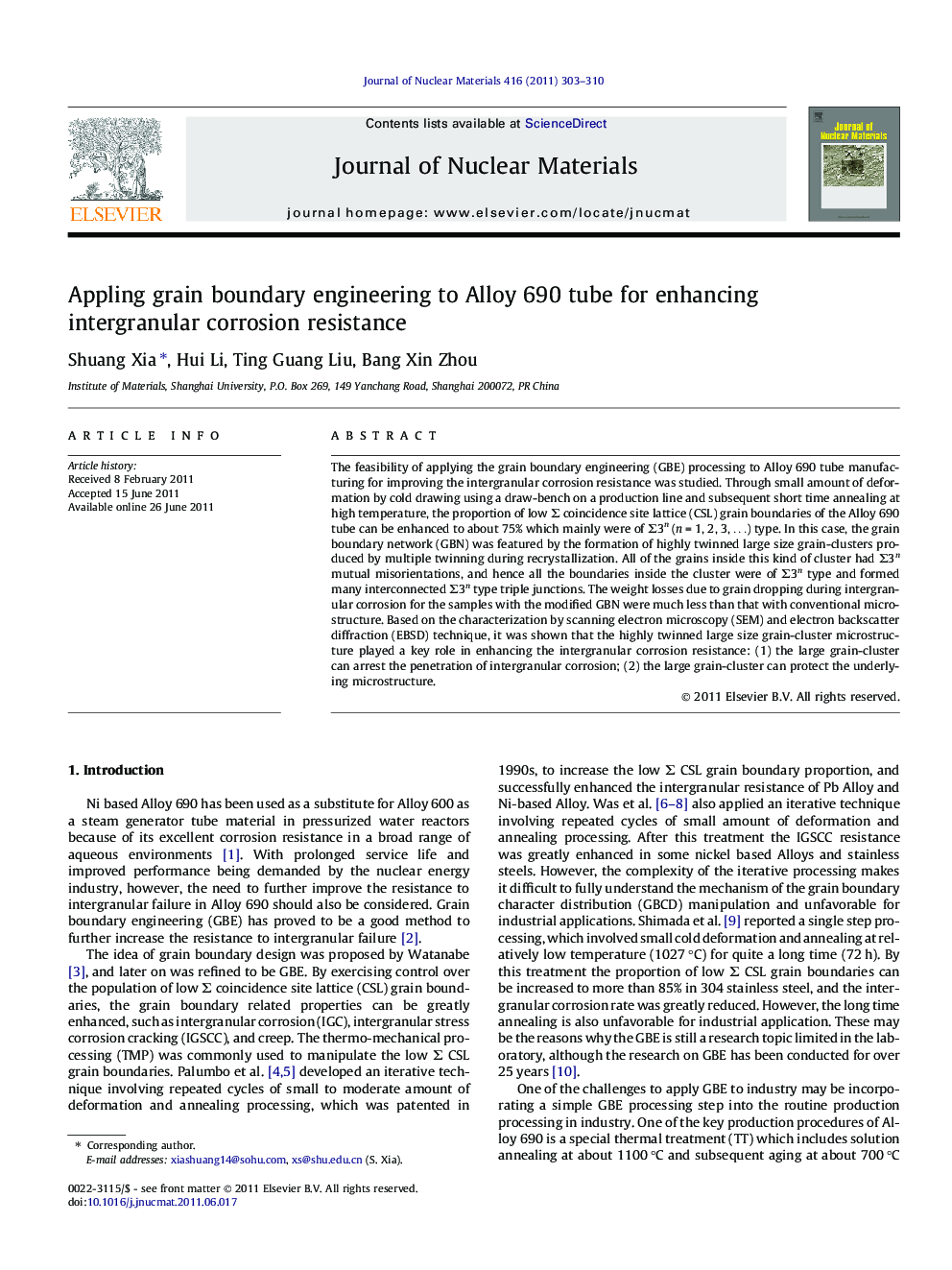| Article ID | Journal | Published Year | Pages | File Type |
|---|---|---|---|---|
| 1566770 | Journal of Nuclear Materials | 2011 | 8 Pages |
The feasibility of applying the grain boundary engineering (GBE) processing to Alloy 690 tube manufacturing for improving the intergranular corrosion resistance was studied. Through small amount of deformation by cold drawing using a draw-bench on a production line and subsequent short time annealing at high temperature, the proportion of low Σ coincidence site lattice (CSL) grain boundaries of the Alloy 690 tube can be enhanced to about 75% which mainly were of Σ3n (n = 1, 2, 3, …) type. In this case, the grain boundary network (GBN) was featured by the formation of highly twinned large size grain-clusters produced by multiple twinning during recrystallization. All of the grains inside this kind of cluster had Σ3n mutual misorientations, and hence all the boundaries inside the cluster were of Σ3n type and formed many interconnected Σ3n type triple junctions. The weight losses due to grain dropping during intergranular corrosion for the samples with the modified GBN were much less than that with conventional microstructure. Based on the characterization by scanning electron microscopy (SEM) and electron backscatter diffraction (EBSD) technique, it was shown that the highly twinned large size grain-cluster microstructure played a key role in enhancing the intergranular corrosion resistance: (1) the large grain-cluster can arrest the penetration of intergranular corrosion; (2) the large grain-cluster can protect the underlying microstructure.
► Grain boundary engineering (GBE) was successfully applied to Alloy 690 tube. ► Highly twinned large size grain-clusters constitute the GBE grain boundary network. ► GBE grain boundary network shows much better resistance to intergranular corrosion.
